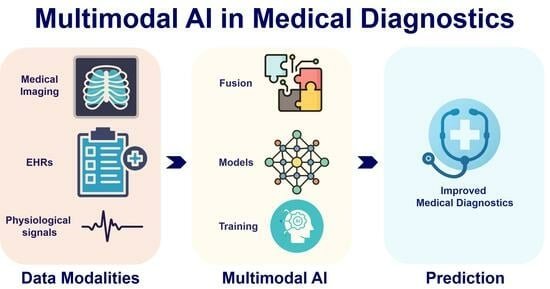
Multimodal AI in Medicine: From Text & Imaging to Genomics & Wearables
Multimodal AI, an advanced methodology that synergizes multiple data modalities, including medical imagery, electronic health records, genomics, and data from wearable gadgets, is driving a revolutionary change in the healthcare sector. This adds up to changing the way doctors diagnose, treat and follow patients. The strength of multimodal AI is that it can turn huge amounts of data into actionable intelligence and can provide a comprehensive view of a patient’s health. It closes the gap between different types of medical data, such as audio, visual and textual data, making it possible to achieve more accurate predictions, customized treatments, and better clinical outcomes. In an era where everything is getting digitized, the scope of using AI-enabled technologies for innovating in the medicine of the future has grown significantly, giving healthcare systems the power to provide precision care as never before.
INTEGRATING TEXT, IMAGING, AND CLINICAL DATA
Among the most important advances of multimodal AI is its ability to analyze and understand both text and image-based medical information at the same time. Traditional AI systems tend to focus on one type of data – radiology images or lab reports, for example. Multimodal AI, on the other hand, combines these different modalities of data into a single model, which can capture the intricate associations among clinical notes, medical images, and patient records.
For example, while reviewing an MRI scan, the AI can pull up a patient’s medical history or pathology report for a more complete reading. This synergy improves diagnostic accuracy and enables doctors to detect diseases earlier and more precisely. At the same time, the tight coupling between data streams eliminates diagnostic mistakes and facilitates medical work flow, leading to time and resource saving. here, multimodal AI has been particularly successful in radiology, oncology and cardiology, areas where interpretation of data from multiple sources is vital to decision-making.
THE ROLE OF GENOMICS IN AI-DRIVEN HEALTHCARE
Genomics is important in personalized medicine and its synergistic effect with multimodal AI is bringing new windows to look diseases at molecules. Genomic information provides a view of the individual patient’s unique genetic profile and how that genetic makeup may influence the patient’s response to certain treatments. When added to imaging data, clinical notes, and readings from wearable devices, AI can detect patterns that human observers would never uncover.
This allows clinicians to customize treatment plans based on a patient’s specific biological profile. For instance, in oncology, multimodal AI models can associate tumour imaging with genetic mutations to predict which treatments will have the best results. Here the convergence of AI and genomics is not simplifying knowledge diagnosis and treatment but also speeding drug discovery assisting pharmaceutical companies in developing targeted therapies more quickly. This represents a significant move towards true precision medicine, in which treatment is tailored for each patient instead of one treatment fits all.
WEARABLE TECHNOLOGY AND CONTINUOUS HEALTH MONITORING
With the proliferation of wearable health devices, a new era in the collection of medical data has dawned. Devices like smartwatches, fitness trackers and biosensors are constantly collecting data on heart rate, oxygen levels, sleep quality and physical activity. Once accessed by multimodal AI, this live data turns into a powerful means of ongoing health monitoring and early illness detection. Imagine a patient with a chronic heart condition: here, AI can scan data from a wearable device in conjunction with clinical records and imaging findings to identify abnormalities well before they become life-threatening.
And with continuous monitoring, there’s theavailability of early intervention that can prevent hospitalization and improve patient outcomes. In addition, the incorporation of wearable data can facilitate remote patient care, bringing healthcare services closer to those living in rural or underprivileged regions. What’s more, multimodal AI’s capacity to process wearable data along with other types of medical data means care can be more dynamic and personalized, which is a big step forward for prevention medicine.
Conclusion
Multimodal AI is the next frontier of medical innovation, bringing together disparate data types and sources within a single framework that improves diagnosis, treatment and prevention. By integrating data from text, imaging, genomics and wearable devices, this transformative technology enables unprecedented understandings of patient health. It allows healthcare practitioners to have better informed decisions, provides personalized care, and enables improved patient outcomes. The convergence of here—the nexus at which all these technologies meet and overlap—demonstrates how far medical science has come in closing the gap between data and action in the clinic. With ongoing investigation, ethical supervisi on, and technological improvement, multimodal AI is poised to revolutionize the future of medicine, ultimately rendering healthcare more intelligent, faster, and even more human-centered in than ever before.




